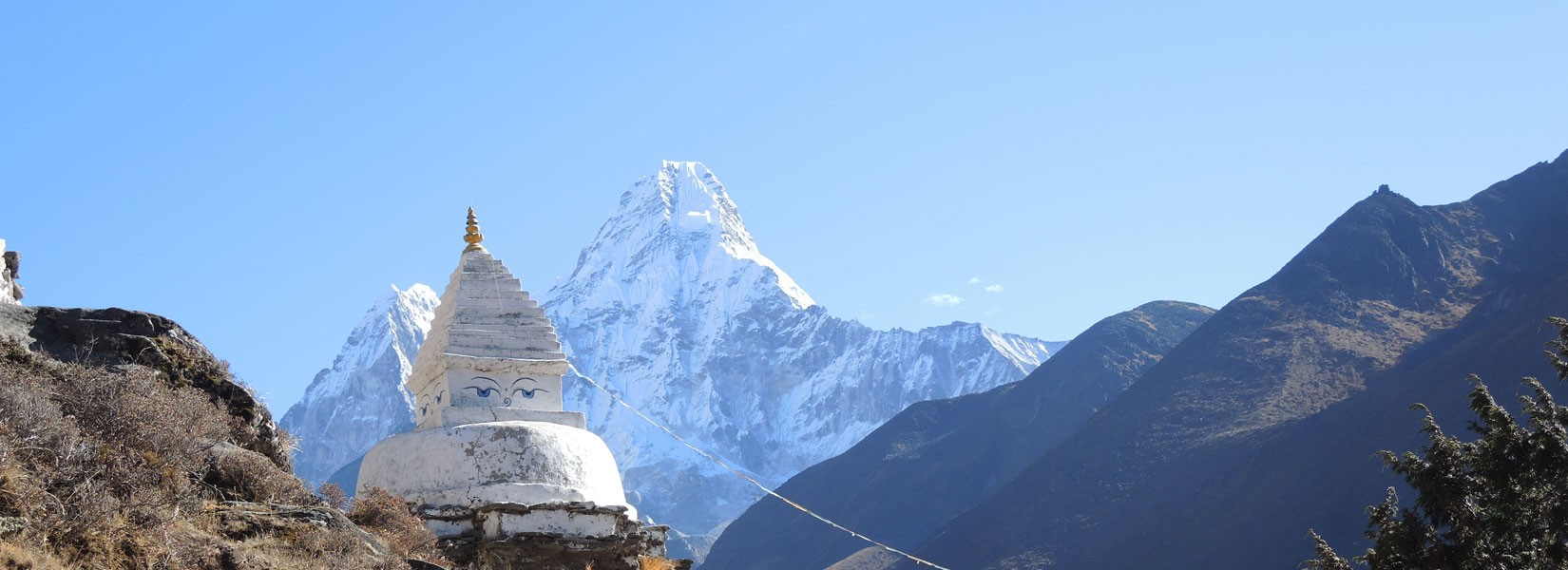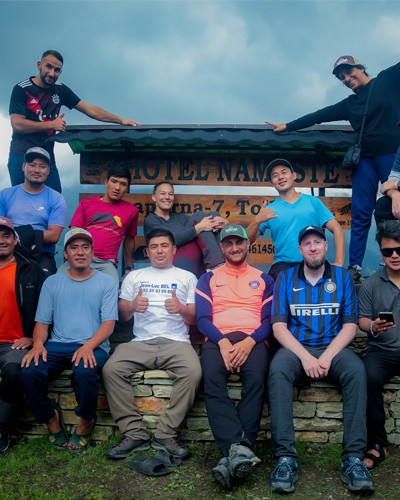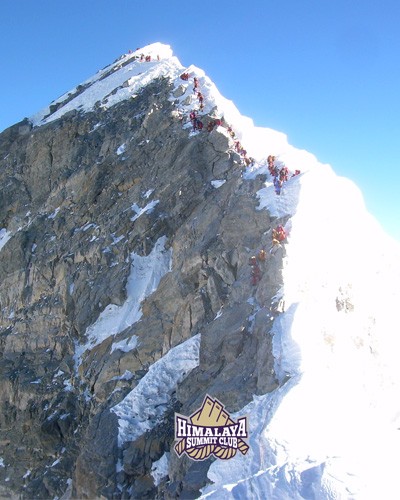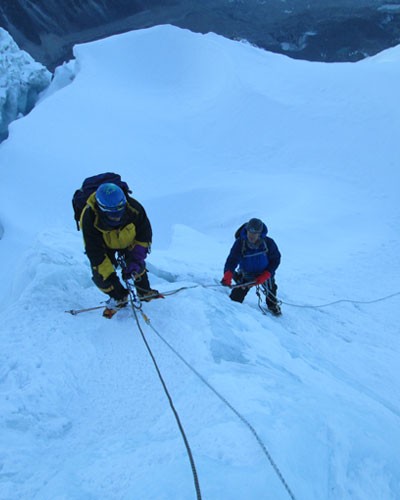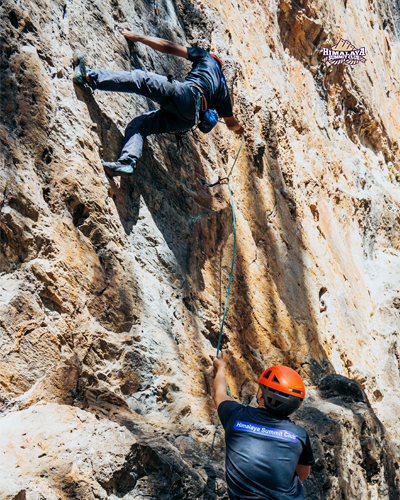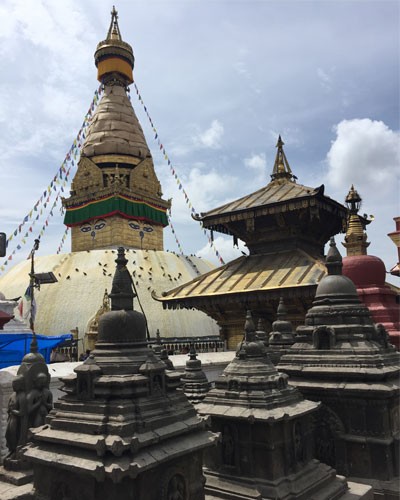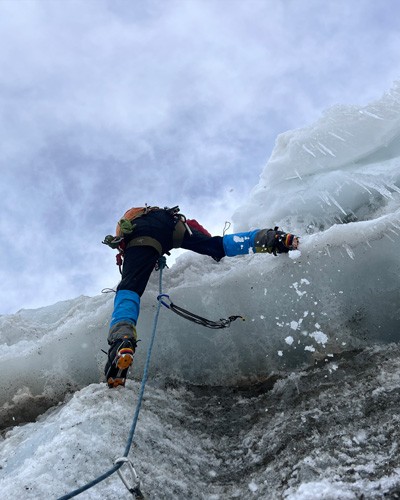Tucked in between two giant nations; China to the North and India to the South, East, and West, Nepal is a landlocked country that lies in the Indian subcontinent. Nepal covers atotal area of 1,47,181 square kilometers and is divided into three geographical regions; the Himalayan Region to the North, Hilly region in the center and to the south lies plain Terai region. Although predominantly composed of Hindu populace, the country boasts of a great array of ethnic communities living with graceful harmony and raving the majesty of the glorious country. The small nation is home to the highest peak in the world, the Mt. Everest (8848m) and many other natural and cultural hallmarks which make the country a gem to ones yearning for supreme travel experiences.
Key Facts
- Area: 1,47,181 square kilometers
- Capital city: Kathmandu
- Population: 29.3 million (census 2017)
- Currency: Nepalese Rupees
- Official language: Nepali
- Political system: Federal Democratic republic
- Calling code: 977+
- Time zone: GMT +5:45
- Working hours: 10 am-5 pm
Entry points to Nepal
Nepal, being a landlocked country, offers roadways and airways as the primary mode of entering the country. Tribhuvan International Airport is the sole international airport in the country and is located in the capital city of the nation; Kathmandu. You can also enter or exit the vicinity of Nepal via seven entry/exit points:
- Kakarvitta, Jhapa (Eastern Nepal)
- Birgung, Parsa (Central Nepal)
- Kodari, Sindhupalchowk (Northern Border)
- Belhiya, Bhairahawa (Rupandehi, Western Nepal)
- Jamunaha, Nepalgunj (Banke, Mid-Western Nepal)
- Mohana, Dhangadi (Kailali, Far Western Nepal)
- Gaddachauki, Mahendranagar (Kanchanpur, Far Western Nepal)
Visa Requirements
Acquiring a visa in Nepal is relevantly easier than other nations. You can acquire a tourist visa from Tribhuvan International Airport upon your arrival at Nepal. In order to apply for a tourist visa in Nepal, all you need is a valid passport with the validity of minimum six months, a passport size photo and tourist visa fee in cash. Travelers from all around the world except Indian citizens must obtain a visa either from Tribhuvan International Airport or at the entry/exit points of Nepal. For additional information, you can refer to the official website of the Department of Immigration at http://www.nepalimmigration.gov.np/page/tourist-visa.
Popular destinations in Nepal
Nepal is one of the most beautiful countries of the Himalayas and scenic beauty around the world. You can witness the unique consolidation of natural and cultural delights upon your visit here. The astonishing blend of cultural marvels, magnificent scenery and the majestic Himalayas makes up for a seemingly uncountable number of destinations to venture. There are plenty of destinations you can visit but some of the most admired and exotic destinations of Nepal are listed below:
- Kathmandu Valley
- Pokhara City
- Everest Base Camp
- Annapurna Base Camp Trek
- Upper Mustang
- Langtang
- Manaslu
- Upper and Lower Dolpa
- Ghorepani Poonhill
- Chitwan National Park
- Gosainkunda Lakes
- Gokyo Lakes
Local currency and foreign exchange
Nepal uses Nepalese Rupee as its official national currency. The currency comes in the form of notes and coins that varies in denominations. The Nepalese Rupees note has the smallest denomination of 1 rupee and the biggest denomination of 1000 Rupees currency note.Foreign currency in Nepal can be exchanged in all national banks of Nepal with the exchange rates fixed by the Nepal Rastriya Bank. You can head to the official website of Nepal Rastriya Bank at https://www.nrb.org.np/fxmexchangerate.php. Apart from banks, there are numerous money-exchangers offices available in the Kathmandu and Pokhara. However, it is advised that the travelers be wary of unauthorized dealers that offer less than fair rates of exchange.
Weather and climate
Due to diversified geographical features of Nepal, the weather and climate vary widely here. The Terai region of Nepal is relevantly hot with humid climate whereas the Hilly region possesses moderate climate almost throughout the year, however, winters are a bit cold here. Likewise, the northern Himalayan region is cold throughout the year. Spring, summer, autumn, and winter are the four climatic seasons of Nepal. Autumn, with slight hints of cold, is regarded to be the best season to travel Nepal.Spring is one of the most admired seasons throughout the year as the temperature is moderate and the weather is pleasant with clear skies and blossom of exotic floras.Summer and winter too are great options with plenty of rain-shadowed and tour destinations available as well.
Festivals
Apart from scenic beauty and cultural delights, Nepal is also popular around the world because of its joyous festivals. Nepal being a multi-ethnic nation holds assortments of unique festivals and celebrations. Each day is a day of the jubilant gala for one or other ethnic groups here. Dashain, Tihar, Chhat Puja, Teej, Losar, Holi, Buddha Jayanti, Shivaratri, Saraswati Puja, and Krishna Janmashtami etc. are some of the most significant festivalsin Nepal. Besides these festivals like Udahauli, Ubhauli, Mani Rimdu, and Tiji are endemic to either a region or an ethnic group and each of these are accompanied by jubilant celebrations. No day is dull when in Nepal!
Health and Safety
Choosing the right region, trek, and grade of difficulty will create the best opportunity for a fun and memorable trip. Treks can range from easy to strenuous. Let it be known that easy still means some climbing and days lasting for 5-7 hours of walking. Moderate will involve up to 8 hours of trekking, and on uneven terrain with plenty of climbing and descending. Strenuous ones are for the well-seasoned trekkers who have experience with multi-day backpacking in wilderness terrain. Along with choosing the right trekfor your physical ability, it is also highly necessary to be prepared for AMS or Altitude Mountain Sickness. In general, AMS can affect anyone going above 3000 meters. It is also necessary that a traveleris insured for the trip and keep in mind that the insurance must also cover emergency evacuations. Besides these, Nepal awaits your arrival into the wonders of the country.
